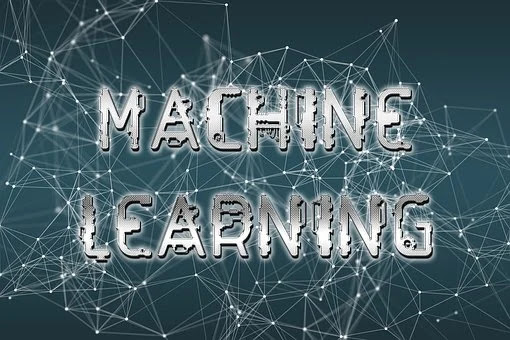In machine learning, the problem of object detection refers to identifying specific objects within a photograph, video, or other media that contains more than one object. This may sound like it should be easy, but in reality it’s quite difficult to get an algorithm to not only recognize an object but also its location within the image so that another part of the program can take action accordingly. This guide will cover everything you need to know about machine learning object detection, including how it works and what it’s used for in the real world today.
 |
| Object Detection in Machine Learning |
what is machine learning?
Machine learning is a process of teaching computers to recognize patterns. In general, there are two types of machine learning: supervised and unsupervised. Supervised learning is where the computer is given a set of training data, and it is then up to the computer to learn from that data and make predictions. Unsupervised learning is where the computer is given data but not told what to do with it; it must figure out the patterns itself. There are many different object detection models list, but some of the most popular ones include support vector machines, k-nearest neighbors, and decision trees.
What Is Object Detection?
Object detection is a branch of machine learning that deals with identifying and localizing objects in images or videos. Unlike object recognition, which only identifies objects, object detection also tells you where the object is located in the image. Object detection models list can be classified into three types:
• Region-based object detectors
• Box-based object detectors
• Faster R-CNN
object detectors Region-based object detectors are more common and use algorithms such as k-d trees to divide an image into regions. Box-based object detectors use bounding boxes while Faster R-CNN object detectors uses Convolutional Neural Networks (CNNs). These three types differ on how they find objects in an image, how they refine those results, what kind of errors they make, their computational complexity and more.
Applications of Object Detection
Object detection is a computer vision technique for identifying objects in images or videos. It can be used for a variety of applications, such as security, agricultural automation, and traffic monitoring. Object detection models can be divided into two main categories: image-based and video-based. Image-based object detectors are trained on static images, while video-based object detectors are trained on sequences of images (i.e., video frames).
Image-based object detectors require an image annotation step. An annotator will mark regions of interest (ROIs) on images. These ROIs may correspond to objects or parts of objects of interest, such as a person’s face or eyes. To train a detector, each ROI is associated with one or more bounding boxes that specify a location and size for each object instance in an image. When a new image comes along that needs detection, only bounding boxes around potential instances need to be checked against each model instead of performing a full scene analysis on every pixel in every frame — which would be computationally expensive.
How Does it Work?
In general, object detection is the process of finding specific objects within a given image. More specifically, computer vision object detection is a subset of machine learning that uses specific algorithms to locate objects within digital images.
Object detection has many uses within machine learning, particularly within image analysis and computer vision. For example, a security camera could use object detection algorithms to identify potential intruders so that they can be dealt with appropriately. Within marketing, businesses can use object detection models to understand which objects are present within photographs taken by customers so that advertising space can be effectively used. Object recognition is also closely linked with other branches of artificial intelligence, such as image classification and image segmentation. In these cases, an image is analysed for certain objects or features before being categorised accordingly.
Object Recognition Models - Second Paragraph: There are a wide range of different approaches to computer vision object detection and recognition but some of the most common include those based on deep learning neural networks.
How do you train an algorithm for image detection?
One of the most important tasks in computer vision is object detection. Object detection algorithms find objects in images or videos. This can be a simple as finding a single object in an image or more complex tasks such as detecting multiple objects in an image and classifying them.
To train an object detection algorithm, you first need a dataset. Most of these datasets are annotated by human workers who label objects present in an image. These annotated images are known as image collections or image datasets.
Object detection models list - Second Paragraph : There are two types of object detectors – local and global. Local detectors find objects within their vicinity, while global detections algorithms can spot an object irrespective of its surroundings. The most popular algorithm for detecting objects is probably Faster R-CNN (Region-based Convolutional Neural Network) and it belongs to global category of algorithms.
The Lingo of Training an Algorithm for Image Detection
In computer vision, object detection is the task of identifying objects in digital images or videos. Object recognition is a machine learning problem where you are given a set of training data (images of objects) and asked to train a model that can recognize these objects in new images.
However, there are more advanced algorithms for object detection that take advantage of computer vision and machine learning. For example, using deep learning techniques, artificial neural networks can be used to train an algorithm that uses image features and training data images as input. The training can be performed off-line and a model can then be used online on new images to detect objects with little latency or delay. These models include both convolutional neural networks (CNNs) as well as Recurrent Neural Networks (RNNs).
Different Types of Objects and Feature Sets
Object detection is a machine learning task that involves both object recognition and localization. Object recognition is the ability of a model to identify objects in an image, while localization is the ability to identify the location of an object in an image. There are many different types of objects that can be detected, including people, animals, cars, and buildings. The feature set used for object detection will vary depending on the type of object being detected. For example, people can be detected using features such as skin color and facial features, while cars can be detected using features such as color and make.
To train an object detection model, you’ll need a large dataset of images that contains both objects and their associated bounding boxes. For example, suppose you want to detect cars. In your training data, each image will contain a car, with a bounding box indicating where it is located. The bounding box will contain information such as its position and dimensions, as well as meta-data such as whether or not it was raining at the time of capture and what type of camera was used to take it. To train an object detection model, you’ll also need annotated images for each type of object you want detected.
Wrapping Up
Object detection machine learning is a machine learning task that involves predicting the class and location of objects in images. It's a crucial part of many computer vision applications, such as self-driving cars, facial recognition, and augmented reality. In this post, we've explored what object detection is and how it works. We've also looked at some of the most popular methods for performing object detection, including region-based methods and CNNs. Finally, we've discussed some of the challenges involved in object detection and ways to overcome them.
Thanks for reading!




